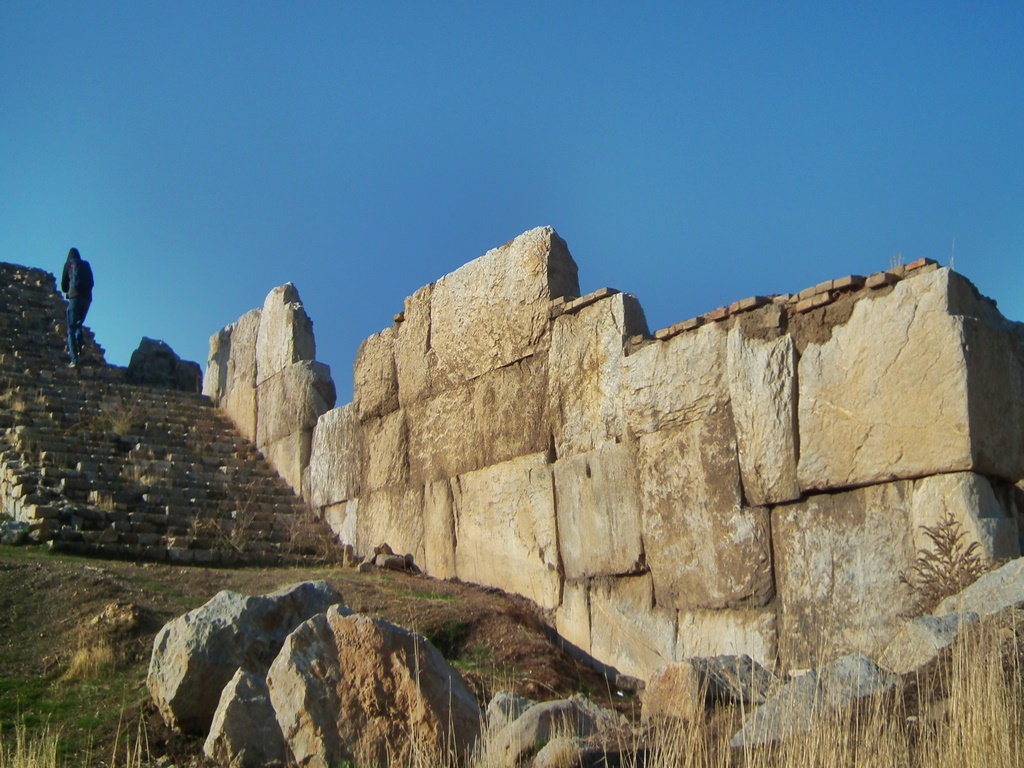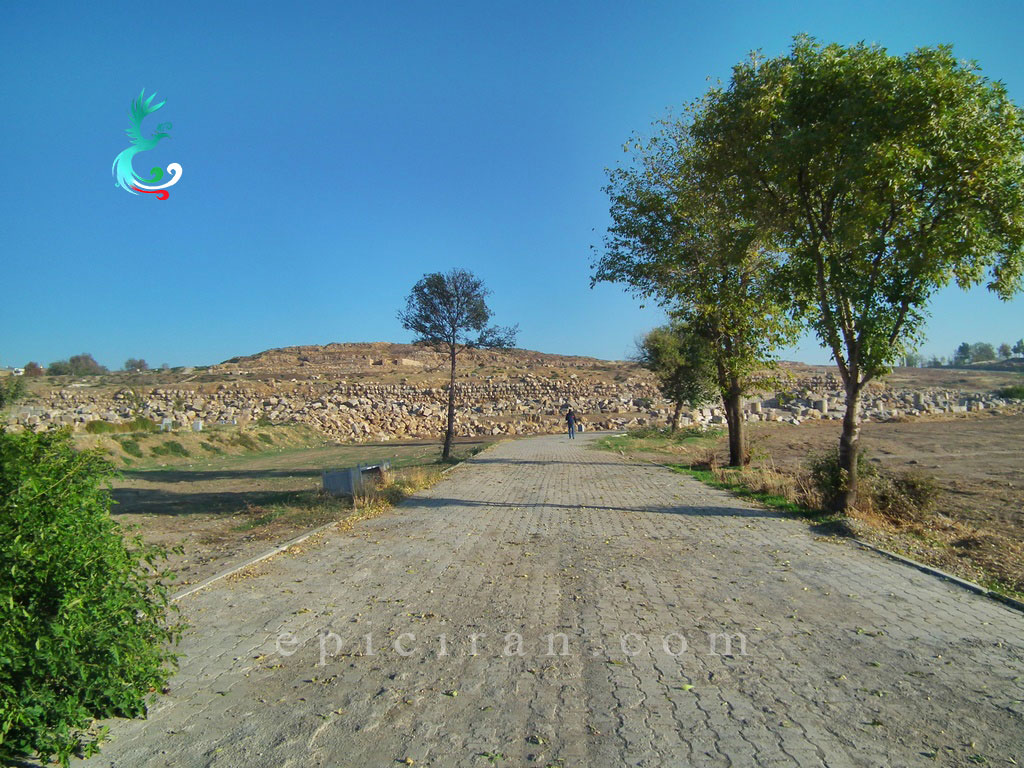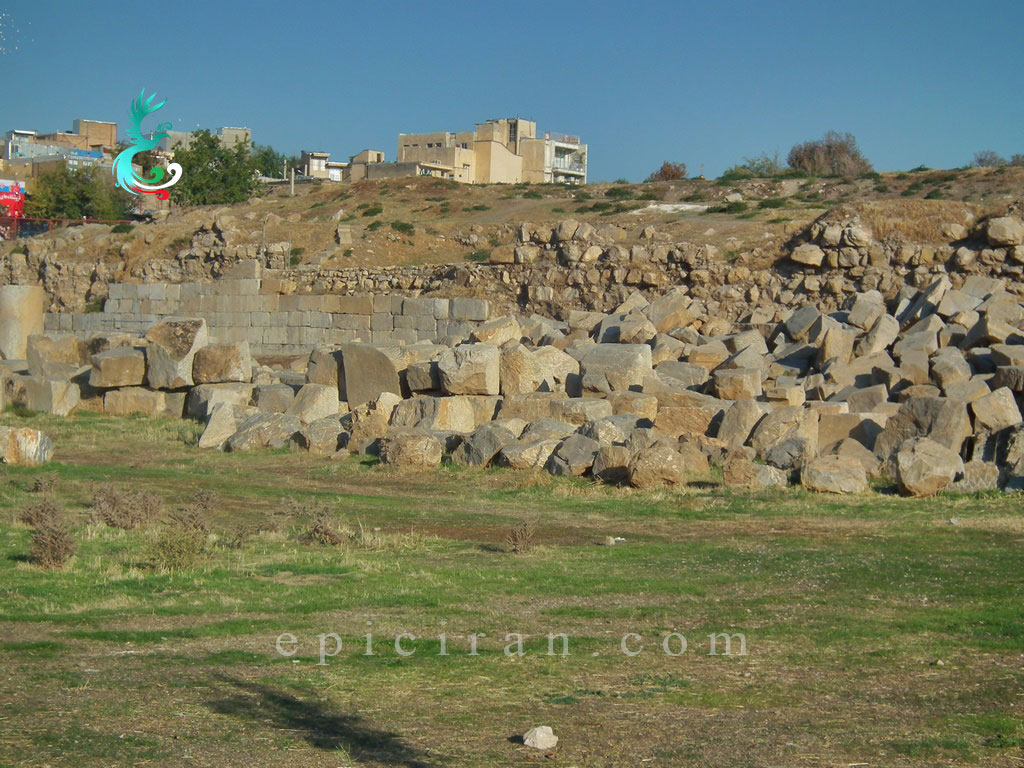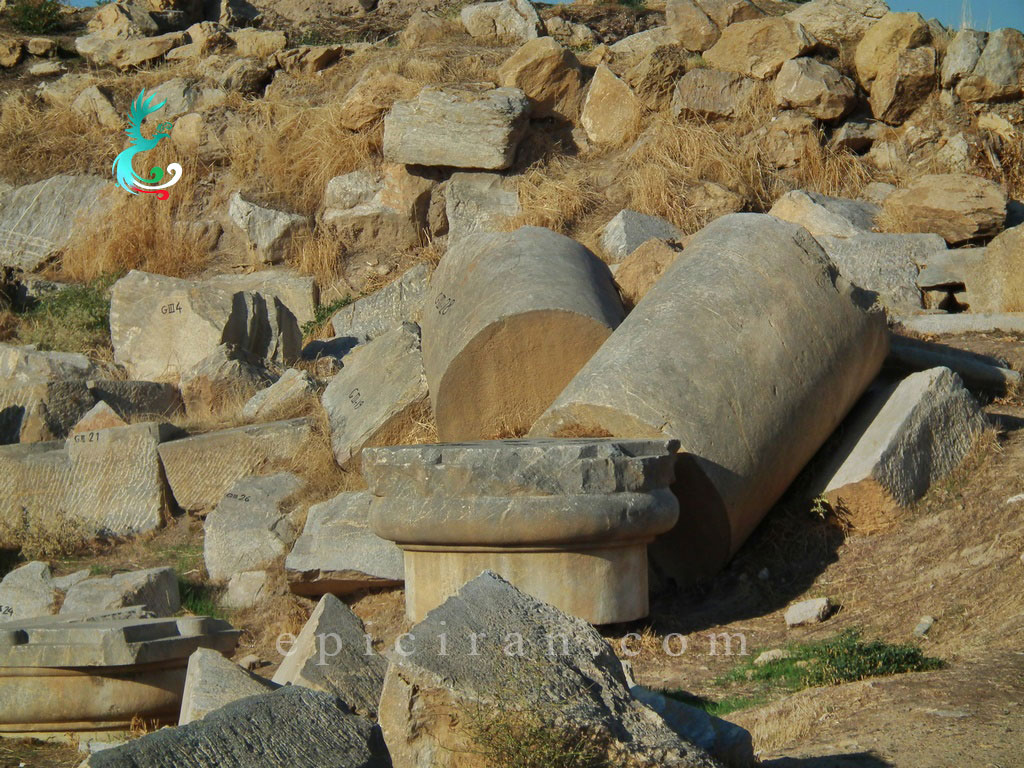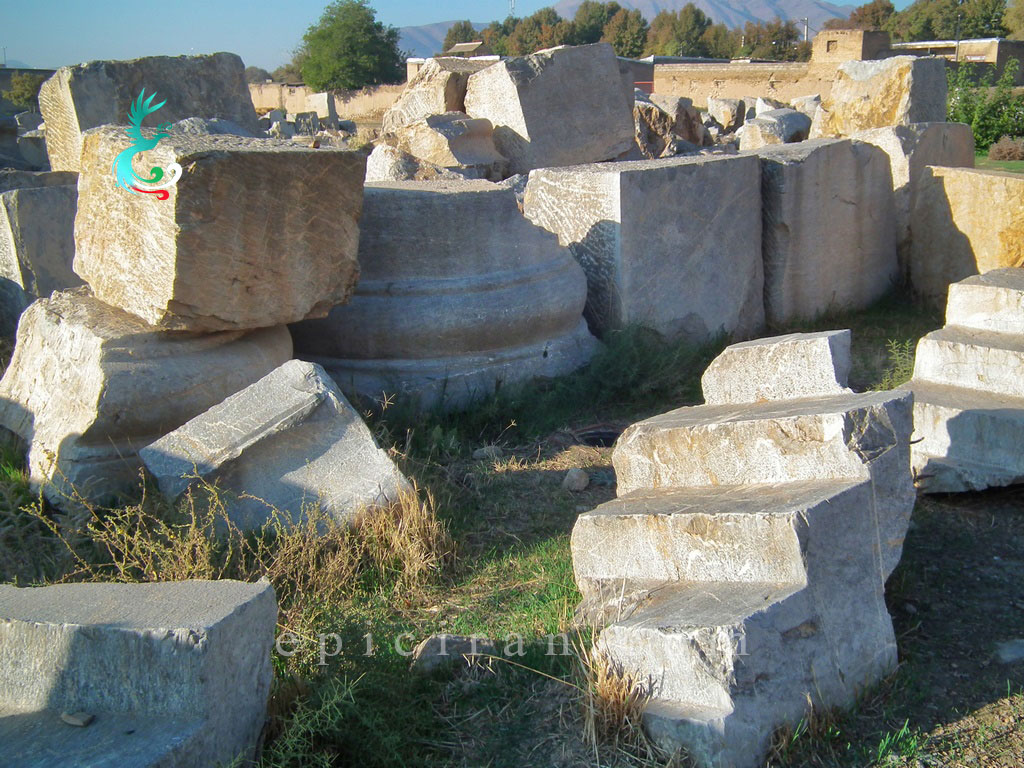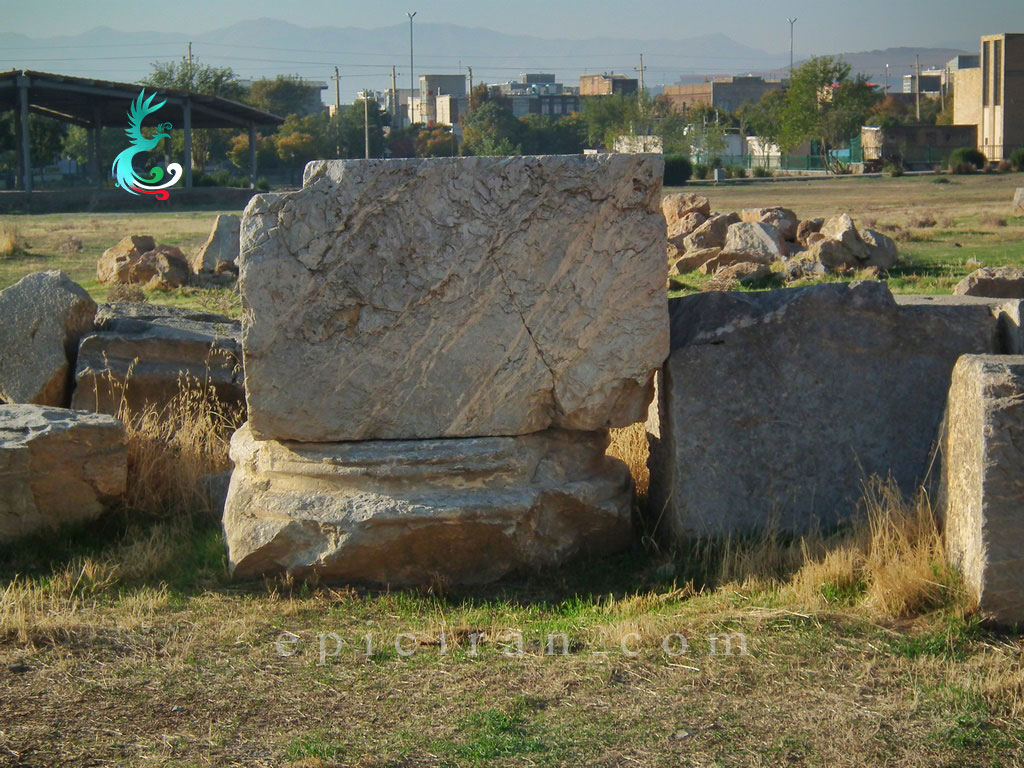The age of Anahita Temple goes back to the centuries before Christ’s birth. It has received its name because the historians first considered it to belong to Anahita, the Persian goddess. This structure has been built on a hill with a height of thirty-three meters above the ground and has an area of more than forty thousand square meters. The footstone of this historical structure was set in the Achaemenid period, and it was later completed during the Sassanid era. Since the main function of Anahita Temple has been worship, relics belonging to the Zoroastrian religion have been found inside it, which shows that the religious ceremonies of Zoroastrianism have been held in this construction.
After the Islamic conquest in Iran, this structure went through a great deal of change, including natural and human-made disasters which can be named as the causes of the destruction of a great section of Anahita Temple. Currently, a small part of this temple, which consists of a number of walls and some columns at the northern part of this historical site, has remained intact.
In the past, this structure was believed to be built in the Greek architectural style, and therefore, as compared to the building of Palmyra Temple in Syria. The main reason why the archeologists considered these temples to be similar was the general plan of them. However, there are differences as well, among which the height of the columns and the higher stature of Anahita Temple from the ground can be mentioned. The most significant difference between these two temples is that the architectural style of Palmyra Temple is completely Greek, while, as mentioned before, the recent discoveries show that Anahita Temple has Persian architecture. This structure can be considered equal to Persepolis because it is the second greatest stone structure in Iran after Persepolis.

